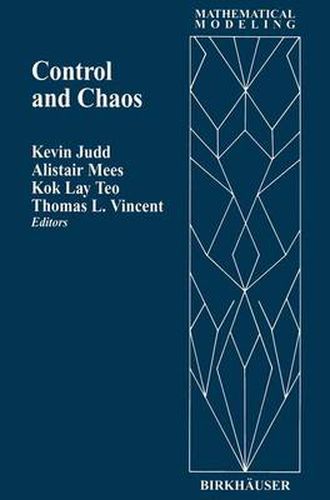Readings Newsletter
Become a Readings Member to make your shopping experience even easier.
Sign in or sign up for free!
You’re not far away from qualifying for FREE standard shipping within Australia
You’ve qualified for FREE standard shipping within Australia
The cart is loading…






This title is printed to order. This book may have been self-published. If so, we cannot guarantee the quality of the content. In the main most books will have gone through the editing process however some may not. We therefore suggest that you be aware of this before ordering this book. If in doubt check either the author or publisher’s details as we are unable to accept any returns unless they are faulty. Please contact us if you have any questions.
This volume contains the proceedings of the US-Australia workshop on Control and Chaos held in Honolulu, Hawaii from 29 June to 1 July, 1995. The workshop was jointly sponsored by the National Science Foundation (USA) and the Department of Industry, Science and Technology (Australia) under the US-Australia agreement. Control and Chaos-it brings back memories of the endless reruns of Get Smart where the good guys worked for Control and the bad guys were associated with Chaos. In keeping with current events, Control and Chaos are no longer adversaries but are now working together. In fact, bringing together workers in the two areas was the focus of the workshop. The objective of the workshop was to bring together experts in dynamical systems theory and control theory, and applications workers in both fields, to focus on the problem of controlling nonlinear and potentially chaotic systems using limited control effort. This involves finding and using orbits in nonlinear systems which can take a system from one region of state space to other regions where we wish to stabilize the system. Control is used to generate useful chaotic trajectories where they do not exist, and to identify and take advantage of useful ones where they do exist. A controller must be able to nudge a system into a proper chaotic orbit and know when to come off that orbit. Also, it must be able to identify regions of state space where feedback control will be effective.
$9.00 standard shipping within Australia
FREE standard shipping within Australia for orders over $100.00
Express & International shipping calculated at checkout
This title is printed to order. This book may have been self-published. If so, we cannot guarantee the quality of the content. In the main most books will have gone through the editing process however some may not. We therefore suggest that you be aware of this before ordering this book. If in doubt check either the author or publisher’s details as we are unable to accept any returns unless they are faulty. Please contact us if you have any questions.
This volume contains the proceedings of the US-Australia workshop on Control and Chaos held in Honolulu, Hawaii from 29 June to 1 July, 1995. The workshop was jointly sponsored by the National Science Foundation (USA) and the Department of Industry, Science and Technology (Australia) under the US-Australia agreement. Control and Chaos-it brings back memories of the endless reruns of Get Smart where the good guys worked for Control and the bad guys were associated with Chaos. In keeping with current events, Control and Chaos are no longer adversaries but are now working together. In fact, bringing together workers in the two areas was the focus of the workshop. The objective of the workshop was to bring together experts in dynamical systems theory and control theory, and applications workers in both fields, to focus on the problem of controlling nonlinear and potentially chaotic systems using limited control effort. This involves finding and using orbits in nonlinear systems which can take a system from one region of state space to other regions where we wish to stabilize the system. Control is used to generate useful chaotic trajectories where they do not exist, and to identify and take advantage of useful ones where they do exist. A controller must be able to nudge a system into a proper chaotic orbit and know when to come off that orbit. Also, it must be able to identify regions of state space where feedback control will be effective.